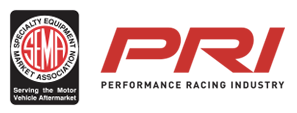U.S. Small Business Administration Loan Programs
The U.S. Small Business Administration (SBA) offers a number of programs to help support small businesses—from counseling to making loans. Several new SBA initiatives have now been developed to help businesses address the Coronavirus challenges. Specifically, the SBA 7(a) loan program has been expanded to include Paycheck Protection Program loans and a new SBA Coronavirus disaster loan program has been created.
Paycheck Protection Program (PPP)
- The PPP loan program ended on May 31, 2021, having provided nearly $800 billion in loans to over 8.5 million small businesses and nonprofit entities. Those same companies and nonprofits may now seek loan forgiveness for funds spent on payroll, rent, and other eligible necessities.
- Covered Period: Funds for potentially forgivable expenses must be spent during the Covered Period. Borrowers can set the “Covered Period” of the loan to be between 8 and 24 weeks after the loan disbursement date.
- Use of Funds: PPP funds can be used to cover payroll, mortgage interest, rent, utilities, expenditures related to software and cloud computing services, certain property damage costs, certain supplier costs, and certain worker protection expenditures. At least 60% of loan proceeds must be used on payroll costs (i.e., wages, payroll taxes, paid leave, healthcare payments, retirement plan contributions, and group life, disability, dental, and vision insurance). Reimbursable compensation in the form of salaries, wages, commissions or similar payments is capped at $100,000 per employee.
- Interest Rate and Repayment Terms: The loan interest rate is 1% for five years. Repayments on any amount not forgiven is deferred at least 10 months after the end of the Covered Period. No collateral or personal guarantees are required and there are no borrower and lender fees.
- Taxable Income: Forgiveness of PPP loans is not to be included as taxable income (federal) but check how your state will treat the loan.
- Tax-Deductible PPP Expenses: PPP loan proceeds are tax-deductible as business expenses (federal) but check how your state will treat the expenses.
- Amount Forgiven: The SBA will forgive up to 100% of the loan principal if the funds have been used appropriately (for payroll, rent, utilities, etc.).
- Streamlined Loan Forgiveness Application: The SBA will now have a simple, one-page form to seek forgiveness of a loan of $150,000 that does not require any submission of documentation. The borrower must simply certify to the following: the number of employees the borrower was able to retain because of the loan; the estimated total amount of the loan spent on payroll costs; and the total loan amount. The borrower must attest that the loan was spent on eligible expenses and that the borrower will retain records that prove compliance with PPP requirements. Employment records must be retained for four years and other records must be retained for three years. (The borrower remains subject to an audit.)
- Receiving PPP Funds: Once a borrower receives a Preferred Lender Program (PLP) number for its loan, the loan is approved by the SBA, and funds are reserved for the borrower. Starting on the date a borrower receives a PLP number, the lender has 10 calendar days to disburse funds. The loan must be disbursed in full, and the 24-week loan forgiveness period begins the day funds are disbursed.
- Employee Retention Tax Credit (ERTC) or PPP Loan Forgiveness? See ERTC below. Before filing a loan forgiveness application, companies are advised to consider whether they will gain more benefits by claiming the tax credit and paying the 1% PPP loan. A choice must be made since you can’t use the same payroll dollars to apply for PPP forgiveness and to apply for the ERTC.
Coronavirus Disaster Loan Program
- The SBA established an economic injury disaster loan (EIDL) program with low-interest loans for small businesses and non-profits (3.75% and 2.75% respectively) that have been severely impacted by COVID-19. EIDL loans are once again available through the most recent COVID-relief law and the application period has been extended to December 31, 2021. The SBA’s Coronavirus Economic Injury Disaster Loan program provides small businesses with working capital loans of up to $150,000 to help overcome temporary revenue loss. Loans may be used to pay fixed debts, payroll, accounts payable, and other bills that can’t be paid because of the disaster’s impact. To be eligible for the loan, borrowers must provide collateral for loans over $25,000. Collateral can be machinery and equipment, furniture and fixtures, and other things. [Note: The SBA previously provided a loan advance of up to $10,000 which automatically became a forgivable grant. EIDL advances are no longer available at this time.]
